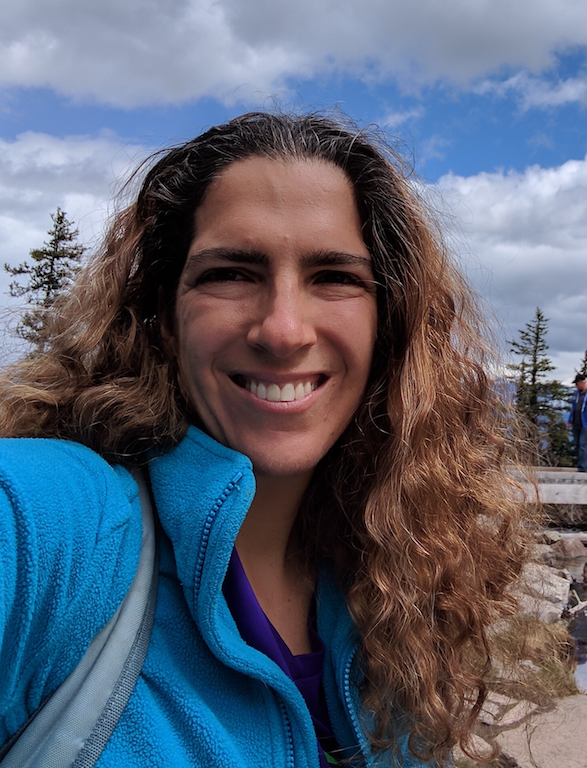
Yael Pritch Knaan
Yael Pritch Knaan received her PhD degree in Computer Science from the Hebrew University of Jerusalem, and her Post doc in Disney Research Zurich. Her research is in the area of computational photography for video and still images. In Google she worked in Google X and in Google AI/Perception developing computational photography / machine learning technologies for the Google Pixel cameras and other Google products. She has more than 50 published papers and patents in her field.
Research Areas
Authored Publications
Sort By
LightLab: Controlling Light Sources in Images with Diffusion Models
Nadav Magar
Amir Hertz
Eric Tabellion
Alex Rav Acha
Yedid Hoshen
Arik Shamir
SIGGRAPH Conference Papers '25 (2025)
Preview abstract
We present a simple, yet effective diffusion-based method for fine-grained, parametric control over light sources in an image. Existing relighting methods either rely on multiple input views to perform inverse rendering at inference time, or fail to provide explicit control over light changes. Our method fine-tunes a diffusion model on a small set of real raw photograph pairs, supplemented by synthetically rendered images at scale, to elicit its photorealistic prior for the relighting task. We leverage the linearity of light to synthesize image pairs depicting controlled light changes of either a target light source or ambient illumination. Using this data and an appropriate fine-tuning scheme, we train a model for precise illumination changes with explicit control over light intensity and color. Lastly, we show how our method can achieve compelling light editing results, and outperforms existing methods based on user preference.
View details
Sky Optimization: Semantically aware image processing in low-light photography
Yun-Ta Tsai
Yair Movshovitz-Attias
Huizhong Chen
(2020), pp. 526-527
Preview abstract
The sky is a major component of the appearance of a photograph, and its color and tone can strongly influence the mood of a picture. In nighttime photography, the sky can also suffer from noise and color artifacts. For this reason, there is a strong desire to process the sky in isolation from the rest of the scene to achieve an optimal look.
In this work, we propose an automated method, which can run as a part of a camera pipeline, for creating accurate sky alpha-masks and using them to improve the appearance of the sky.
Our method performs end-to-end sky optimization in less than half a second per image on a mobile device.
We introduce a method for creating an accurate sky-mask dataset that is based on partially annotated images that are inpainted and refined by our modified weighted guided filter. We use this dataset to train a neural network for semantic sky segmentation.
Due to the compute and power constraints of mobile devices, sky segmentation is performed at a low image resolution. Our modified weighted guided filter is used for edge-aware upsampling to resize the alpha-mask to a higher resolution.
With this detailed mask we automatically apply post-processing steps to the sky in isolation, such as automatic spatially varying white-balance, brightness adjustments, contrast enhancement, and noise reduction.
View details
Handheld Mobile Photography in Very Low Light
Kiran Murthy
Yun-Ta Tsai
Tim Brooks
Tianfan Xue
Nikhil Karnad
Qiurui He
Dillon Sharlet
Ryan Geiss
Samuel W. Hasinoff
Marc Levoy
ACM Transactions on Graphics, 38 (2019), pp. 16
Preview abstract
Taking photographs in low light using a mobile phone is challenging and rarely produces pleasing results. Aside from the physical limits imposed by read noise and photon shot noise, these cameras are typically handheld, have small apertures and sensors, use mass-produced analog electronics that cannot easily be cooled, and are commonly used to photograph subjects that move, like children and pets. In this paper we describe a system for capturing clean, sharp, colorful photographs in light as low as 0.3 lux, where human vision becomes monochromatic and indistinct. To permit handheld photography without flash illumination, we capture, align, and combine multiple frames. Our system employs “motion metering”, which uses an estimate of motion magnitudes (whether due to handshake or moving objects) to identify the number of frames and the per-frame exposure times that together minimize both noise and motion blur in a captured burst. We combine these frames using robust alignment and merging techniques that are specialized for high-noise imagery. To ensure accurate colors in such low light, we employ a learning-based auto white balancing algorithm. To prevent the photographs from looking like they were shot in daylight, we use tone mapping techniques inspired by illusionistic painting: increasing contrast, crushing shadows to black, and surrounding the scene with darkness. All of these processes are performed using the limited computational resources of a mobile device. Our system can be used by novice photographers to produce shareable pictures in a few seconds based on a single shutter press, even in environments so dim that humans cannot see clearly.
View details
Synthetic Depth-of-Field with a Single-Camera Mobile Phone
Neal Wadhwa
Rahul Garg
David E. Jacobs
Bryan E. Feldman
Nori Kanazawa
Robert Carroll
Yair Movshovitz-Attias
Marc Levoy
SIGGRAPH (2018) (to appear)
Preview abstract
Shallow depth-of-field is commonly used by photographers to isolate a subject from a distracting background. However, standard cell phone cameras cannot produce such images optically, as their short focal lengths and small apertures capture nearly all-in-focus images. We present a system to computationally synthesize shallow depth-of-field images with a single mobile camera and a single button press. If the image is of a person, we use a person segmentation network to separate the person and their accessories from the background. If available, we also use dense dual-pixel auto-focus hardware, effectively a 2-sample light field with an approximately 1 millimeter baseline, to compute a dense depth map. These two signals are combined and used to render a defocused image. Our system can process a 5.4 megapixel image in 4 seconds on a mobile phone, is fully automatic, and is robust enough to be used by non-experts. The modular nature of our system allows it to degrade naturally in the absence of a dual-pixel sensor or a human subject.
View details
